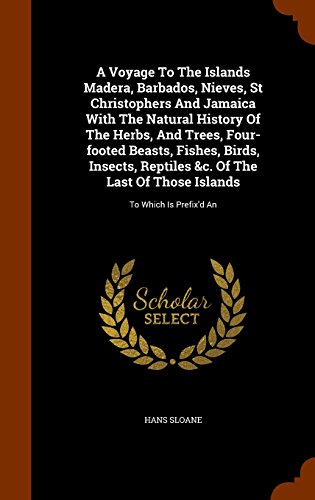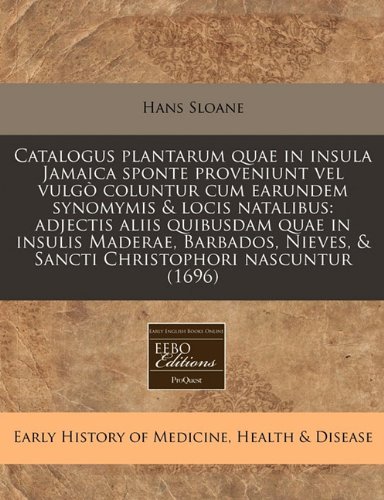Background
He was born on the 16th of April 1660 at Killyleagh in tounty Down, Ireland, where his father had settled at the head of a Scotch colony sent over by James I.



(This work has been selected by scholars as being cultural...)
This work has been selected by scholars as being culturally important, and is part of the knowledge base of civilization as we know it. This work was reproduced from the original artifact, and remains as true to the original work as possible. Therefore, you will see the original copyright references, library stamps (as most of these works have been housed in our most important libraries around the world), and other notations in the work. This work is in the public domain in the United States of America, and possibly other nations. Within the United States, you may freely copy and distribute this work, as no entity (individual or corporate) has a copyright on the body of the work. As a reproduction of a historical artifact, this work may contain missing or blurred pages, poor pictures, errant marks, etc. Scholars believe, and we concur, that this work is important enough to be preserved, reproduced, and made generally available to the public. We appreciate your support of the preservation process, and thank you for being an important part of keeping this knowledge alive and relevant.
http://www.amazon.com/gp/product/1343543789/?tag=2022091-20

( EARLY HISTORY OF MEDICINE, HEALTH & DISEASE. Imagine ho...)
EARLY HISTORY OF MEDICINE, HEALTH & DISEASE. Imagine holding history in your hands. Now you can. Digitally preserved and previously accessible only through libraries as Early English Books Online, this rare material is now available in single print editions. Thousands of books written between 1475 and 1700 can be delivered to your doorstep in individual volumes of high quality historical reproductions. This series includes fascinating studies on the human brain from as early as the 16th century, as well as early studies on the physiological effects of tobacco use. Anatomy texts, medical treatises and wound treatments are also discussed, revealing the exponential development of medical theory and practice over more than two hundred years. ++++ The below data was compiled from various identification fields in the bibliographic record of this title. This data is provided as an additional tool in helping to insure edition identification: ++++ Catalogus plantarum quae in insula Jamaica sponte proveniunt vel vulgò coluntur cum earundem synomymis & locis natalibus : adjectis aliis quibusdam quae in insulis Maderae, Barbados, Nieves, & Sancti Christophori nascuntur Sloane, Hans, Sir, 1660-1753. Includes index. 5, 232, 49 p. Londini : Impensis D. Brown, 1696. Wing / S3998 Latin Reproduction of the original in the Cambridge University Library ++++ This book represents an authentic reproduction of the text as printed by the original publisher. While we have attempted to accurately maintain the integrity of the original work, there are sometimes problems with the original work or the micro-film from which the books were digitized. This can result in errors in reproduction. Possible imperfections include missing and blurred pages, poor pictures, markings and other reproduction issues beyond our control. Because this work is culturally important, we have made it available as part of our commitment to protecting, preserving and promoting the world's literature.
http://www.amazon.com/gp/product/1171290594/?tag=2022091-20
naturalist physician collector
He was born on the 16th of April 1660 at Killyleagh in tounty Down, Ireland, where his father had settled at the head of a Scotch colony sent over by James I.
As a youth, Sloane collected objects of natural history and other curiosities. This led him to the study of medicine, which he went to London, where he studied botany, materia medica, surgery and pharmacy. After four years in London he travelled through France, spending some time at Paris and Montpellier, and stayed long enough at the University of Orange-Nassau to take his MD degree there in 1683.
He attracted the notice of Thomas Sydenham, who gave him valuable introductions to practice. In 1687, he became a fellow of the College of Physicians, and the same year went to Jamaica aboard HMS Assistance as physician in the suite of the new Governor of Jamaica, the second Duke of Albemarle. Jamaica was fast emerging as a source of immense profit to British merchants based on the cultivation of sugar and other crops by the forced labor of West Africans—many from the Akan and other peoples of the regions which the English entitled the Gold and Slave Coasts.
The duke died soon after landing, and Sloane's visit lasted only fifteen months. During that time he noted about 800 new species of plants, which he catalogued in Latin in 1696; and at a later date (1707-1725) he made the experiences of his visit the subject of two folio volumes. He became secretary to the Royal Society in 1693, and edited the Philosophical Transactions for twenty years. His practice as a physician among the upper classes was large. In the pamphlets written concerning the sale by Dr William Cockburn (1669-1739) of his secret remedy for dysentery and other fluxes, it was stated for the defence that Sloane himself did not disdain the same kind of professional conduct; and some colour is given to that charge by the fact that his only medical publication, an Account of a Medicine for Soreness, Weakness and other Distempers of the Eyes (London, 1745) was not given to the world until its author was in his eighty-fifth year and had retired from practice.
In 1716 Sloane was created a baronet, making him the first medical practitioner to receive a hereditary title. In 1719 he became president of the Royal College of Physicians, holding the office for sixteen years. In 1722 he was appointed physician-general to the army, and in 1727 first physician to George II.
In 1727 he succeeded Sir Isaac Newton as president of the Royal Society. He retired from it at the age of eighty.
He was a founding governor of London's Foundling Hospital, the nation's first institution to care for abandoned children.
Sloane's memory survives more by his judicious investments than by anything that he contributed to the subject matter of natural science or even of his own profession. His purchase of the manor of Chelsea, London, in 1712, provided the grounds for the Chelsea Physic Garden.
His great stroke as a collector was to acquire in 1701 (by bequest, conditional on paying of certain debts) the cabinet of William Courten, who had made collecting the business of his life.
When Sloane retired in 1741, his library and cabinet of curiosities, which he took with him from Bloomsbury to his house in Chelsea, had grown to be of unique value. He had acquired the extensive natural history collections of William Courten, Cardinal Filippo Antonio Gualterio, James Petiver, Nehemiah Grew, Leonard Plukenet, the Duchess of Beaufort, the rev. Adam Buddle, Paul Hermann, Franz Kiggelaer and Herman Boerhaave.
On his death on 11 January 1753 he bequeathed his books, manuscripts, prints, drawings, flora, fauna, medals, coins, seals, cameos and other curiosities to the nation, on condition that parliament should pay his executors £20, 000, far less than the value of the collection. The bequest was accepted on those terms by an act passed the same year, and the collection, together with George II's royal library, etc. , was opened to the public at Bloomsbury as the British Museum in 1759.
A significant proportion of this collection was later to become the foundation for the Natural History Museum.
He also gave the Apothecaries' Company the land of the Chelsea physic garden, which they had rented from the Chelsea estate since 1673.
Sloane Square, Sloane Street, Sloane Grammar School and Sloane Gardens in the Royal Borough of Kensington and Chelsea are named after Sir Hans. His first name is given to Hans Street, Hans Crescent, Hans Place and Hans Road, all of which are also situated in the Royal Borough.
Sloane Square, Sloane Street, Sloane Grammar School and Sloane Gardens in the Royal Borough of Kensington and Chelsea are named after Sir Hans. His first name is given to Hans Street, Hans Crescent, Hans Place and Hans Road, all of which are also situated in the Royal Borough.
(This work has been selected by scholars as being cultural...)
( EARLY HISTORY OF MEDICINE, HEALTH & DISEASE. Imagine ho...)
Sloane was elected to the Royal Society in 1685.
Sloane encountered cacao while he was in Jamaica, where the locals drank it mixed with water, though he is reported to have found it nauseating. Many recipes for mixing chocolate with spice, eggs, sugar and milk were in circulation by the seventeenth century. After returning from Jamaica, Sloane may have devised his own recipe for mixing chocolate with milk, though if so, he was not the first. By the 1750s, a Soho grocer named Nicholas Sanders claimed to be selling Sloane's recipe as a medicinal elixir, perhaps making "Sir Hans Sloane's Milk Chocolate" the first brand-name milk chocolate. By the nineteenth century, the Cadbury Brothers sold tins of drinking chocolate whose trade cards also invoked Sloane's recipe.
Sloane married Elizabeth Langley Rose, the widow of Fulke Rose of Jamaica, and daughter of alderman John Langley. They had three daughters, Mary, Sarah and Elizabeth, and one son, Hans. Of the four children, only Sarah and Elizabeth survived infancy. Sarah married George Stanley of Paultons and Elizabeth married Charles Cadogan, the future Second Baron Cadogan. Income from the sugar produced by enslaved African laborers on Elizabeth's plantations at an area known as Sixteen Mile Walk fed the family fortunes in London and, together with Sloane's medical revenue and London property investments, gave him the wealth to collect on a vast scale.
